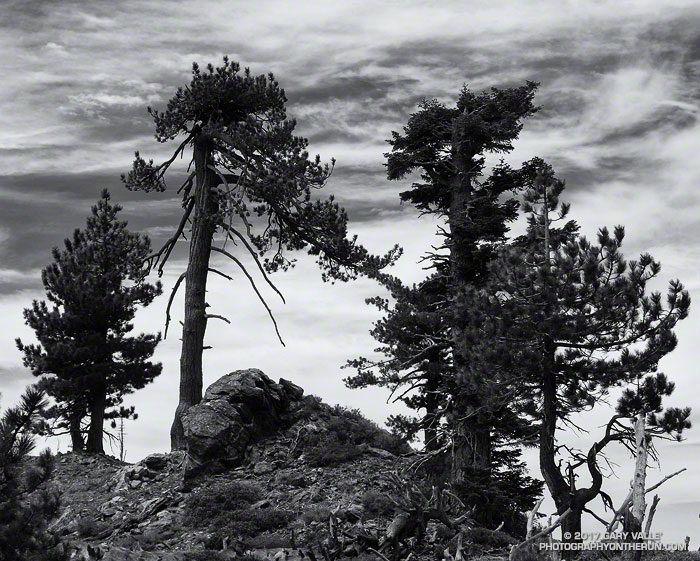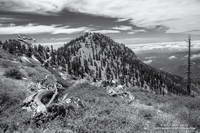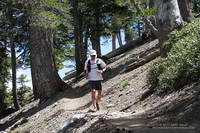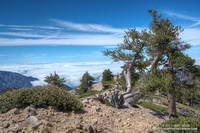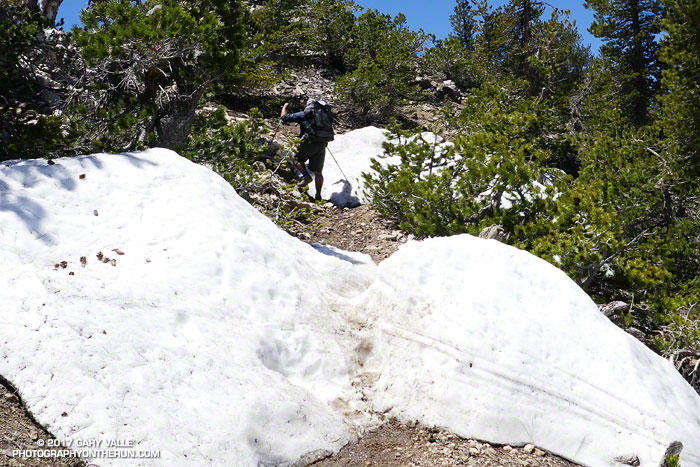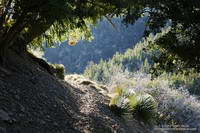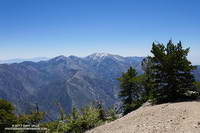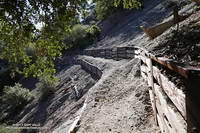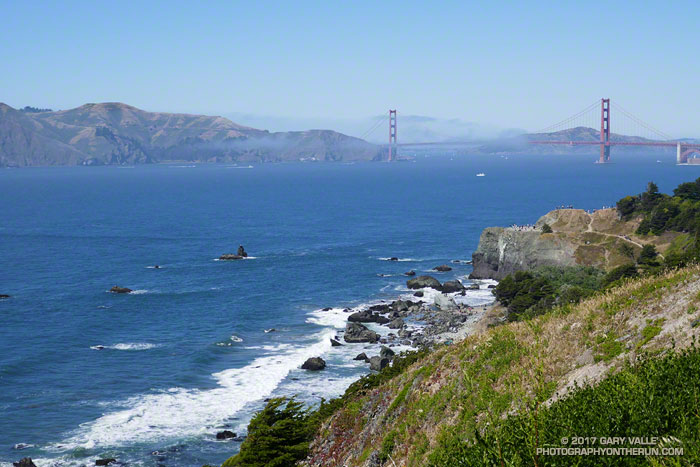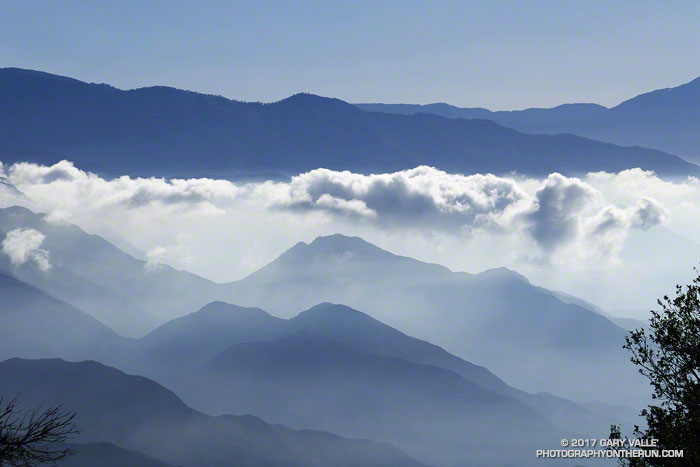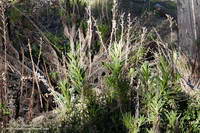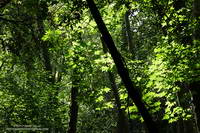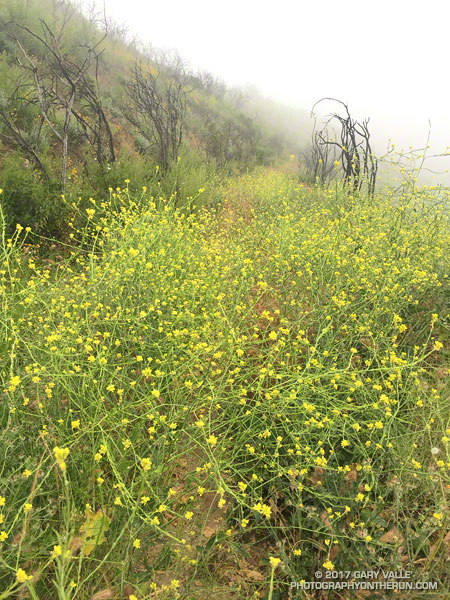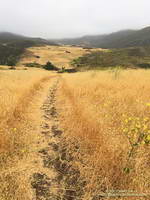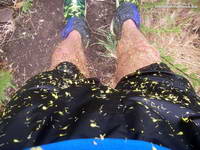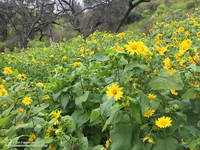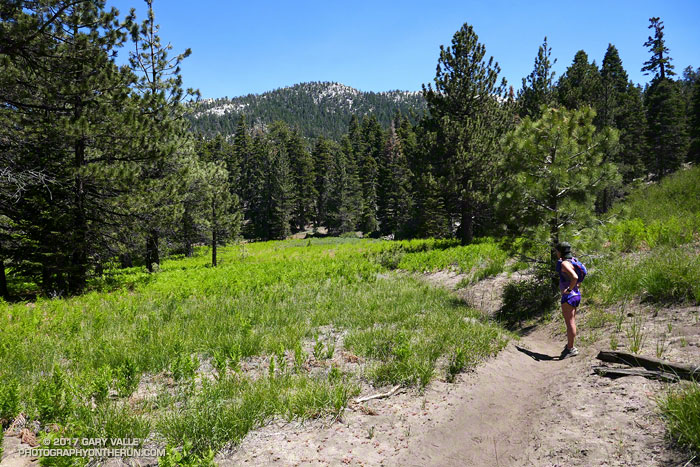
We were nearly to the junction of the Pacific Crest Trail and the South Ridge Trail and about a half-mile from Tahquitz Peak (8846′). It was hot. In the shade the temp was in the high 80s, but in direct sun the temperature was close to 100°F.
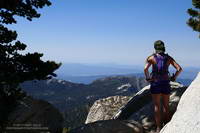
A few hours earlier Skye and I had grabbed the first car up on the Palm Springs Tram and done the 5 mile, 2435′ ascent of San Jacinto Peak. At 10,800’+ at 10:00 in the morning it had been 70°F — warm for one of the higher mountains of Southern California. Remarkably, a couple of small patches of snow remained on the south side of the summit.
Where we were now, 70 degrees would feel like a refrigerator. We’d given up that cooler clime and all the elevation we’d gained, and run five miles down the Wellman Divide Trail and PCT to Saddle Junction — a descent of about 2700′. The temperature had increased all the way down.
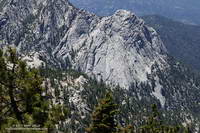
We might as well have been in a drying oven. The combination of the hot weather, a high sun, low humidity and higher altitude had desiccated me. At the turn-off off from the PCT to Tahquitz Peak I lifted my pack and squeezed the reservoir — again. In the few minutes since I last checked, no water had magically found its way into my pack. There was less than 20 ounces remaining and that wasn’t going to be enough.
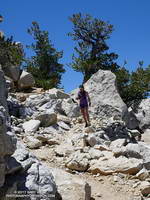
After running over to Tahquitz Peak and visiting the lookout, there was still the minor detail of getting back to the Tram. The Mountain Fire closure was still in effect, which meant we could not use the Willow Springs Trail and would have to retrace our steps and climb all the way back up to Wellman Divide.
During the drought I would bring extra water when doing this route, and stash it along the trail. With this year’s good snowpack it seemed we should be able to find water if we needed it.
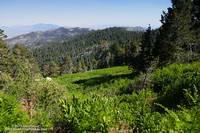
Prior to the Mountain Fire I’d used Willow Creek as a water source, but since the Willow Springs Trail was closed, that was out. The seep at Wellman Cienaga was too far up and the flow was low. Skunk Cabbage Meadow and Tahquitz Valley were a possibility. Originally included in the Mountain Fire closure area, they had reopened. I recalled a water source in Skunk Cabbage Meadow, but didn’t remember much about it.
When we got to Tahquitz Peak we asked Joe, the volunteer Ranger at the Tahquitz Peak Lookout, what he thought would be a good water source. He suggested Tahquitz Creek in Tahquitz Valley. I hadn’t been to Tahquitz Valley, so this was a great time to check it out.
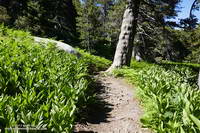
Although small in its upper reaches, Tahquitz Creek had plenty of water. Using a UV Pen, we refilled our packs and drank until we couldn’t drink any more. Continuing, we found there was also water available at Skunk Cabbage Meadow. At least for now. I wouldn’t hazard a guess how long these water sources will last.
Ah water, wonderful water. With water the hike and run back to Wellman Divide was just a sweaty, strenuous and scenic climb, and not the hellish ascent it might have been.
Some related posts: San Jacinto Peak and Tahquitz Peak Trail Run, Room With a View, Mountain Weather

